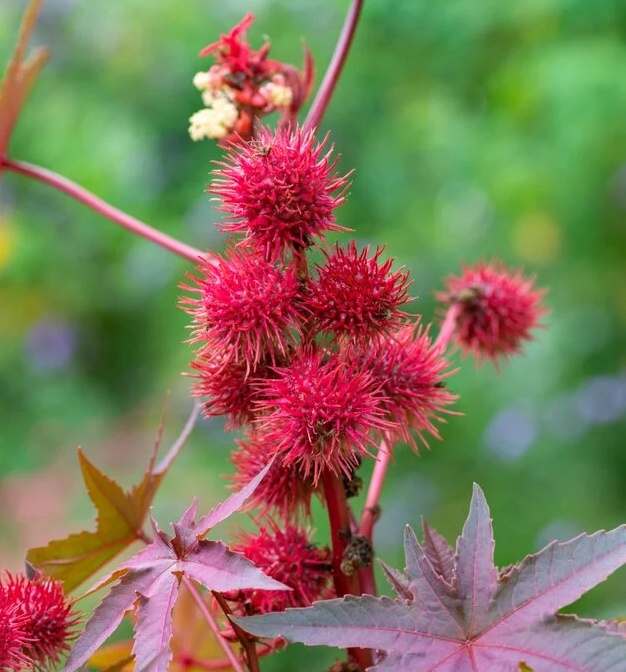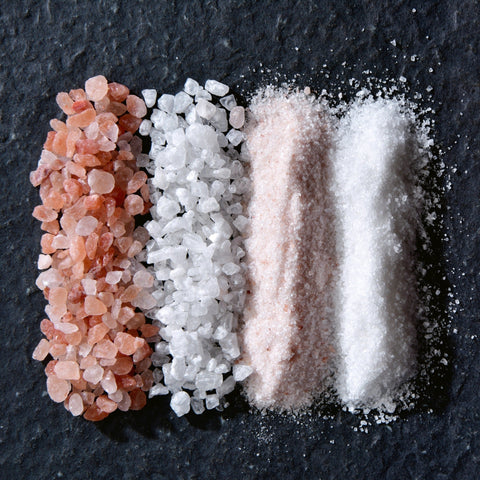Castor Oil From Global Cultivation to Your Skin: Origins, Quality, Uses & Best Pairings
From the sun-drenched farms of India and Brazil to your skincare routine, castor oil’s journey is rich with history, craftsmanship, and natural goodness.
Known for its deep hydration and versatility, Golden Essence cold-pressed, hexane-free castor oil is loved by wellness seekers, DIY skincare makers, and holistic beauty enthusiasts alike.
In this guide, you’ll learn:
- Where castor oil is grown — and why Australia doesn’t produce much
- How it's cold-pressed, tested, and shipped globally
- Why “hexane-free” and “cold-pressed” really matter
- Ways to use castor oil for skin, hair, massage, and wraps
- The best oils to blend with castor oil (like jojoba and coconut)
Whether you’re new to castor oil or refining your natural rituals, this guide helps you choose, use, and blend it with confidence. Learn more about castor oil benefits.
Origins & Cultivation
Castor oil's journey from plant to product is a fascinating tale of global agriculture and traditional wisdom. Let's explore where this versatile oil comes from and how it's produced.
Where Castor Oil Begins
Castor oil comes from the seeds of the Ricinus communis plant, commonly known as the castor bean plant. This hardy, fast-growing shrub thrives in tropical and subtropical regions worldwide.
The plant's history dates back thousands of years, with evidence of its use in ancient civilizations. Ancient Egyptians used castor oil for medicinal purposes and as a fuel for lamps.
Today, castor oil is prized for its unique properties in cosmetics, industry, and wellness applications. Its versatility stems from its high concentration of ricinoleic acid, a fatty acid not found in significant amounts in other vegetable oils.

Top Producers of Castor Oil
Today, over 80% of the world’s castor oil comes from India, with Brazil and China also playing major roles. Other producers include Thailand, Ethiopia and The Philippines
Interestingly, Australia isn't a major castor oil producer. The plant's invasive nature and potential toxicity have led to restrictions on its cultivation in many parts of the country.
The quality of castor oil can vary depending on its origin. Indian castor oil is often considered superior due to the country's long history of cultivation and processing expertise.
Harvesting and Pressing Seeds
The journey from castor plant to oil is a meticulous process that ensures quality and purity. Here's a simplified breakdown:
- Harvesting: Castor beans are harvested when the seeds reach maturity, typically 4-6 months after planting.
- Drying: The harvested seeds are dried to reduce moisture content, which is crucial for oil extraction.
- Cleaning: Seeds are cleaned to remove any debris or foreign materials.
- Pressing: The cleaned seeds are then cold-pressed to extract the oil. This method preserves the oil's beneficial properties.
- Filtering: The extracted oil is filtered to remove any remaining particulates.
The result is a pure, high-quality castor oil ready for various applications. For a visual guide to this process, check out this informative video on castor oil production.
Processing & Quality
The quality of castor oil depends heavily on how it's processed. Let's delve into the key factors that determine the purity and effectiveness of this versatile oil.
Understanding Cold-Pressed Oil
Cold-pressed castor oil is the gold standard in the industry. This method involves mechanically pressing castor seeds at low temperatures, typically below 49°C (120°F).
The benefits of cold-pressing include:
- Preservation of natural nutrients
- Retention of beneficial enzymes
- Maintenance of the oil's natural scent and color
Cold-pressed oils are generally considered superior for skincare and wellness applications. They retain more of the plant's natural properties, resulting in a more potent and effective product. At Golden Essence we offer high-quality castor oil in a range of sizes.
Importance of Hexane-Free Oil
Hexane-free extraction is another crucial factor in producing high-quality castor oil. Hexane is a chemical solvent sometimes used to extract oils from seeds, but it can leave harmful residues.
Benefits of hexane-free castor oil:
- Free from chemical residues
- Safer for skin and hair applications
- More environmentally friendly production process
When choosing castor oil, always opt for hexane-free varieties to ensure you're getting a pure, natural product. This is especially important for those using castor oil in wellness routines or DIY beauty treatments.
Ensuring Purity and Quality
Quality control is paramount in castor oil production. Reputable manufacturers employ rigorous testing to ensure their products meet high standards of purity and efficacy.
Key quality control measures include:
- Batch testing for contaminants
- Verification of fatty acid composition
- Sensory evaluation (color, odor, consistency)
- Third-party laboratory testing

Usage & Applications
Castor oil's versatility makes it a popular choice for a wide range of applications. From beauty routines to wellness practices, this powerful oil has much to offer.
Common Castor Oil Uses
Castor oil's unique properties make it a valuable ingredient in many personal care routines. Its high concentration of ricinoleic acid contributes to its moisturizing and nourishing effects.
Common uses include:
- Hair care: Promoting hair growth and moisturizing the scalp
- Skin care: Hydrating dry skin and reducing inflammation
- Lash and brow care: Encouraging growth and thickness
- Massage: As a base oil for therapeutic massages
For a comprehensive guide on castor oil applications, check out this article on castor oil benefits for skin and hair.
Incorporating Castor Oil Wraps
Castor oil wraps are a popular wellness practice, believed to support detoxification and reduce inflammation. This method involves applying castor oil to the skin and covering it with a wrap or compress.
How to do a castor oil wrap:
- Apply a thin layer of castor oil to the desired area
- Cover with a clean cloth or plastic wrap
- Apply heat (optional) using a hot water bottle or heating pad
- Leave on for 30-60 minutes
- Remove the wrap and gently clean the area
While scientific evidence is limited, many people report positive experiences with castor oil wraps for various wellness purposes.

Benefits for Different Users
Castor oil's diverse properties make it beneficial for a wide range of users. Here are some examples:
- Dry skin sufferers: Castor oil's deep moisturizing properties can provide relief for dry, itchy skin.
- Those with sensitive scalps: The oil's anti-inflammatory properties may soothe scalp irritation.
- Fitness enthusiasts: Castor oil massages can help soothe tired muscles after workouts.
- Natural beauty advocates: It's a versatile ingredient for DIY beauty recipes.
For more information on the potential health benefits of castor oil, refer to this comprehensive guide from Medical News Today.
Remember, while castor oil is generally safe for most people, it's always wise to do a patch test before widespread use and consult with a healthcare professional if you have any concerns.






